
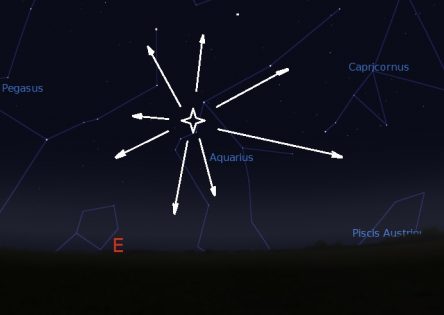 • May 5 – The Eta Aquariid meteor shower peaks during the early morning hours. Unfortunately, the waning gibbous moon will interfere. You can minimize the moon’s glare by finding a building, hills, or tree line that can block it from view. Expect to see, at most, ten meteors per hour during peak times. The meteors that you do see are actually the remnants of Halley’s Comet.
• May 5 – The Eta Aquariid meteor shower peaks during the early morning hours. Unfortunately, the waning gibbous moon will interfere. You can minimize the moon’s glare by finding a building, hills, or tree line that can block it from view. Expect to see, at most, ten meteors per hour during peak times. The meteors that you do see are actually the remnants of Halley’s Comet.
The moon is at apogee, its most distant point in its orbit around the Earth for the month, at 7:35 P.M., at a distance of 251,318 miles.
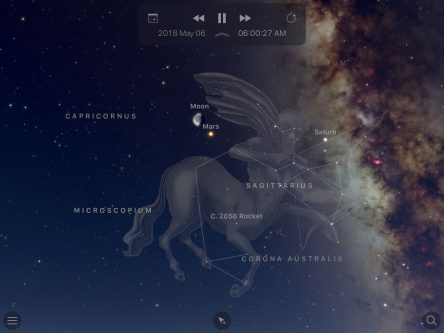
May 6 – Look for the waning gibbous moon to be about 2 or 3 degrees from the planet Mars in the pre-dawn sky.
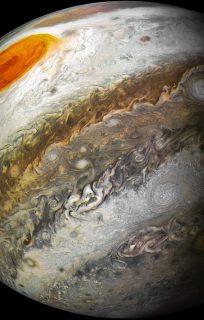 May 8 – The planet Jupiter is at opposition. When a planet is at opposition it lies opposite the Sun from our perspective here on Earth. In other words, if you were “above” the solar system and looking “down”, then you would see a configuration like this: Sun->Earth->Jupiter. The best time to view a planet through a telescope is when it is at opposition. This is because the planet is at its closest point in its orbit for the year to Earth and because it is up pretty much all night long in our sky.
May 8 – The planet Jupiter is at opposition. When a planet is at opposition it lies opposite the Sun from our perspective here on Earth. In other words, if you were “above” the solar system and looking “down”, then you would see a configuration like this: Sun->Earth->Jupiter. The best time to view a planet through a telescope is when it is at opposition. This is because the planet is at its closest point in its orbit for the year to Earth and because it is up pretty much all night long in our sky.

Cecilia Payne-Gapsochkin
May 10 – Cecilia Payne-Gapsochkin, British-American astronomer, was born this day in 1900. In a day and age when women had a tough time getting degrees and careers in the sciences, Payne became the first person to correctly identity what the Sun and stars are made of, thereby changing our views of the universe.
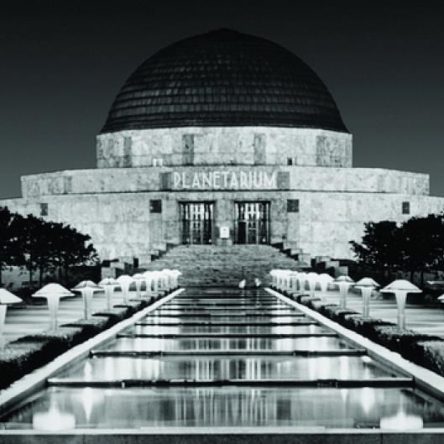
Adler Planetarium
May 12 – Chicago’s Adler Planetarium opened on this day in 1930, becoming the first modern planetarium in the western hemisphere.
May 15 – New moon occurs at 6:48 A.M. CDT
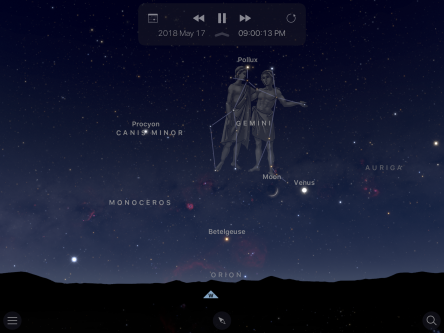
May 17 – Look for the moon just a few degrees to the east of Venus.
The moon is at perigee, the closest point in its orbit around the Earth for the month, at 4:05 P.M. CDT, at a distance of 226,040 miles away.
May 18 – Apollo 10 launched. Apollo 10 was the fourth manned mission in the Apollo program and the second to orbit the moon. Aboard the spacecraft were Thomas P. Stafford, John Young, and Eugene Cernan. The call sign for the command module was Charlie Brown, while the call sign for the landing module was Snoopy.
May 19 – Free public star party at Pinnacle Mountain State Park visitor center, 8:30 P.M. to 10:30 P.M. Members of the Central Arkansas Astronomical Society will have telescopes set up for you to look through at the current wonders overhead. Constellation tours and a pre-star party indoor program will also be provided.
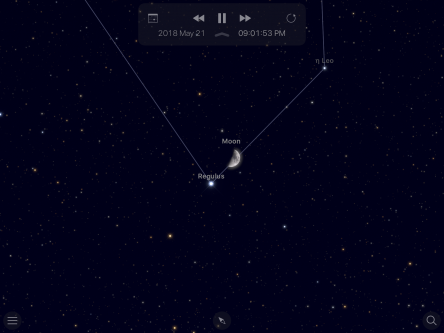
May 21 – The moon is at first quarter this evening. Look for the star Regulus, the alpha star in Leo, less than a degree away to the south of the moon.
May 23 – The first day of spring. If you are living on Mars’ southern hemisphere that is.

May 25 – On this day in 1961, President John F. Kennedy tells Congress that the United States is going to the moon.
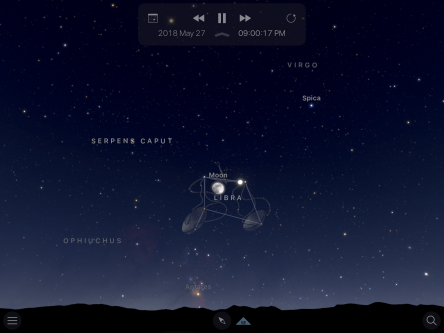
May 27 – The moon is just to the east of the planet Jupiter in our evening sky.
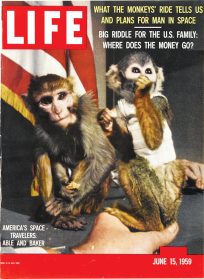
May 28 – On this day in 1959, a rhesus monkey named Able and a squirrel monkey named Baker, became the first primates in space as they made a suborbital flight around the Earth. Able and Baker, along with some sea urchin eggs and some fruit flies, returned safely to Earth
May 29 – Full moon officially occurs at 9:20 A.M. CDT.
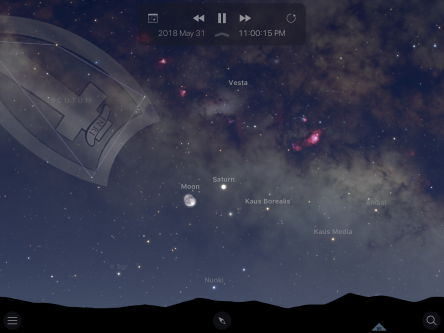
May 31 – Stay up late and see the moon just to the east of Saturn.